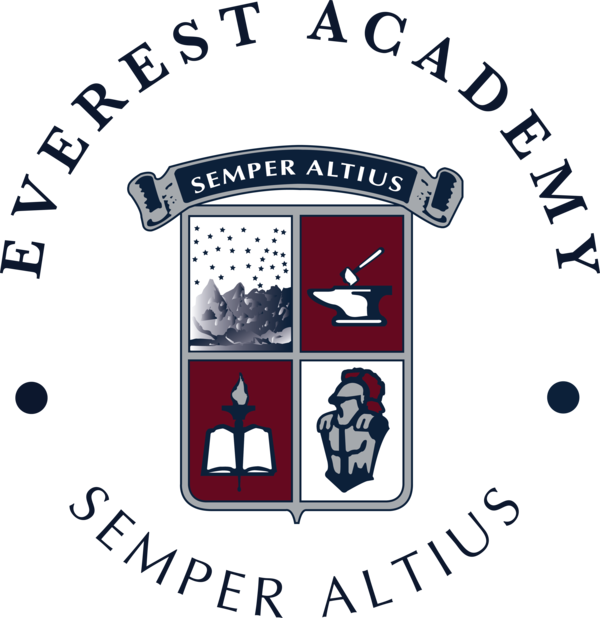Language Arts
Students will:
Define and discuss the characteristics of different literary forms and genres
Use reading strategies to understand a variety of literary passages and texts, such as fairy tales, short stories, fables, legends, tall tales, adventure stories, humorous stories, myths, legends, fantasy, mystery, epics, historical fiction, realistic fiction, chapter books, novels, biographies, autobiographies, expository text, poetry and prose
Analyze and use the various literary techniques, such as characterization, exaggeration, humor, imagery, point of view, foreshadowing, repetition, flashback, rhyme, rhythm
Compare works according to literary characteristics (character, setting plot, conflict, climax, rising action, resolution, theme, mood, tone, point of view)
Respond to test both orally and in writing at different levels (literal, interpretive and allegorical)
Apply research skills, such as taking notes, making key word outlines, organizing and classifying information, summarizing and paraphrasing, conducting computer-generated research, composing documents with appropriate formatting
Develop ability to write essays
Develop listening skills, creative writing and public speaking
Memorize and recite selected pieces (poetry, speeches, etc.)
Apply correct grammar and punctuation to writing using the program, Structure and Style
Math
Students will:
Master and apply knowledge of place value, addition and subtraction with regrouping, multiplication and division concepts and facts, statistics and probability, measurement and time, algebra as appropriate to developmental level, geometry as appropriate to developmental level, multiplying and dividing by one digit, fractions and decimals.
Apply problem solving skills throughout each unit of study
Continue practice of mental math
Science
Students will:
Further develop understanding of the scientific process and thinking skills, such as observation, analysis and interpretation
Develop habits such as precision, initiative and skepticism
Use scientific tools applying skills and habits
Frame questions, design research approaches, conduct trial runs, write reports and communicate results
Compete in annual science fair
Focus on geology and meteorology, water resources, world oceans, space exploration, moon and earth characteristics, plant and animal classification, heredity, cell structure and function, ecosystems (rainforest), endocrine, skeletal, muscular and nervous systems of the human body
Social Studies
Students will:
Recognize and discuss major world historical events, characteristics, achievements, and cultural legacies of Mediterranean civilizations to Western Civilization
Study the Prehistory Era, Stone Age, Metals Age and Neolithic Revolution
Study early agricultural civilizations of Mesopotamia, Egypt, Israel Phoenicia, and Far East civilizations such as India and China
Study Mediterranean civilizations of Greece and Rome and the development of early Christianity
Describe the increasing influence of the early Christian Church on the Roman Empire from the period when Emperor Constantine declared religious freedom (approx. 315 A.D.) until Christianity became the official religion of the empire (380 A.D.)
Identify church Fathers and Missionaries and learn about their lives and main ideas
Student Barbarian invasions, the fall of the Western Roman Empire, the foundations of a Christian civilization in Western Europe, and the emergence of other new civilizations: Byzantium and Islam
Recognize and discuss some major characteristics of medieval European culture: everyday life and customs, social hierarchy, government, main economic activities, religious traditions and beliefs, artistic expressions, intellectual, scientific and technological discoveries, as well as inventions and accomplishments
Study the geography of North Africa, Middle East, South Asia and Europe
Identify location, physical features, political regions and human/environmental interactions during the above time periods
Religion
Students will:
Examine the Old Testament: salvation history up to the birth of Christ
Review the Christian Revelation and the celebration of the Christian Mystery (i.e., the Sacraments)
Develop an understanding of the seven Sacraments as instruments of sanctifying grace
Review and discuss sacred signs and symbols
Identify how each of the sacraments is an encounter with Christ
Explain why Baptism, Eucharist and Confirmation are considered Sacraments of Initiation, Reconciliation and anointing are considered Sacraments of Healing and Matrimony and Holy Orders are considered Sacraments of Vocation
Define grace and illustrate the means God uses to bestow grace
Articulate the importance of the Feast of Pentecost and the guidance of the Holy Spirit in the birth and life of the Church
Study Scripture and church doctrine (Catechism of the Catholic Church) and identify scripture passages that relate to the Sacraments
Discover various forms of prayer and worship (formal guided meditation, spontaneous, liturgical and song)
Demonstrate knowledge of the parts of the Mass
Participate in local service projects
Fifth grade students also attend classes in Art, Music, Spanish and Physical Education.

